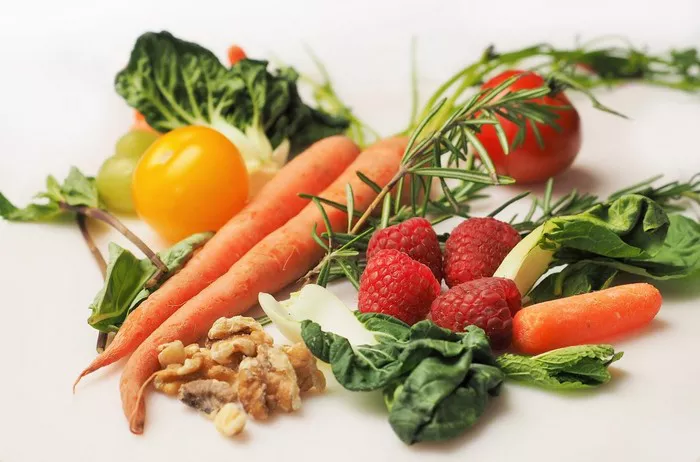Alright, veggie enthusiasts, let’s dive deep into the world of plant-based protein – because who says you need meat to build muscle and stay strong?
Whether you’re a devoted herbivore or just looking to add more plant-based goodness to your diet, there’s no denying the power of plants when it comes to fueling your body.
In this article, we’re going to explore some of the best sources of plant-based protein and how you can incorporate them into your meals for a healthy and satisfying diet. So grab your favorite veggies and let’s get started on this plant-powered adventure!
What Makes Plant-Based Protein So Awesome?
First things first, let’s talk about what makes plant-based protein so darn awesome.
You see, plants are packed with all sorts of essential nutrients, including protein, vitamins, minerals, and fiber, that are vital for maintaining a healthy body and mind.
Unlike animal-based protein sources, which can be high in saturated fat and cholesterol, plant-based protein is naturally low in fat and cholesterol and contains zero cholesterol – making it a heart-healthy choice for people of all ages.
Essential Plant-Based Protein Sources
Now that we’ve established the importance of plant-based protein, let’s take a closer look at some of the best sources you’ll find in your local supermarket or farmer’s market:
1. Beans and Legumes:
Beans, lentils, chickpeas, and peas are all excellent sources of plant-based protein, with an average of 15-20 grams of protein per cooked cup. They’re also rich in fiber, iron, and other essential nutrients, making them a staple in vegetarian and vegan diets alike.
2. Tofu and Tempeh:
Tofu and tempeh, both made from soybeans, are versatile plant-based proteins that can be used in a wide variety of dishes. Tofu is soft and mild in flavor, making it perfect for stir-fries, scrambles, and smoothies, while tempeh has a firmer texture and nutty flavor that works well in sandwiches, salads, and stir-fries.
3. Quinoa:
Quinoa is a nutrient-dense grain that’s not only high in protein but also a complete protein, meaning it contains all nine essential amino acids that the body needs. With about 8 grams of protein per cooked cup, quinoa is a great choice for adding protein to salads, soups, and grain bowls.
4. Nuts and Seeds:
Almonds, peanuts, walnuts, chia seeds, hemp seeds, and flaxseeds are all rich sources of plant-based protein, as well as healthy fats and fiber. Sprinkle them on top of oatmeal, yogurt, or salads for a crunchy and nutritious boost of protein.
5. Soy Products:
In addition to tofu and tempeh, soy products like edamame, soy milk, and soy yogurt are also excellent sources of plant-based protein. They’re also rich in calcium, vitamin D, and other nutrients that are important for bone health.
Tips for Incorporating Plant-Based Protein into Your Diet
Now that you know where to find plant-based protein, let’s talk about how you can incorporate it into your meals for maximum deliciousness and nutrition:
1. Mix it Up:
Variety is the spice of life, so don’t be afraid to mix and match different plant-based protein sources in your meals. Try experimenting with different beans, grains, nuts, and seeds to keep things interesting and ensure you’re getting a wide range of nutrients.
2. Get Creative:
Think outside the box when it comes to cooking with plant-based protein. Use tofu or tempeh as a substitute for meat in stir-fries, burgers, and tacos, or blend beans and lentils into soups, stews, and sauces for an extra dose of protein and fiber.
3. Power Up Your Snacks:
Snack time is the perfect opportunity to sneak in some extra plant-based protein. Keep a stash of roasted chickpeas, edamame, or trail mix on hand for a quick and satisfying protein boost between meals.
4. Don’t Forget About Breakfast:
Start your day off right by incorporating plant-based protein into your breakfast routine. Add nuts, seeds, or nut butter to your morning oatmeal or yogurt, or whip up a tofu scramble with plenty of veggies for a hearty and filling breakfast.
5. Plan Ahead:
Meal prep can be a lifesaver when it comes to incorporating more plant-based protein into your diet. Spend some time on the weekend prepping ingredients like cooked beans, grains, and tofu that you can easily incorporate into meals throughout the week.
Conclusion
And there you have it– a guide to the best sources of plant-based protein and how you can incorporate them into your diet for a healthy and satisfying lifestyle. Whether you’re a committed vegetarian, a curious flexitarian, or just looking to add more plant-based goodness to your meals, there’s no shortage of delicious and nutritious options to choose from. As always, happy eating!























